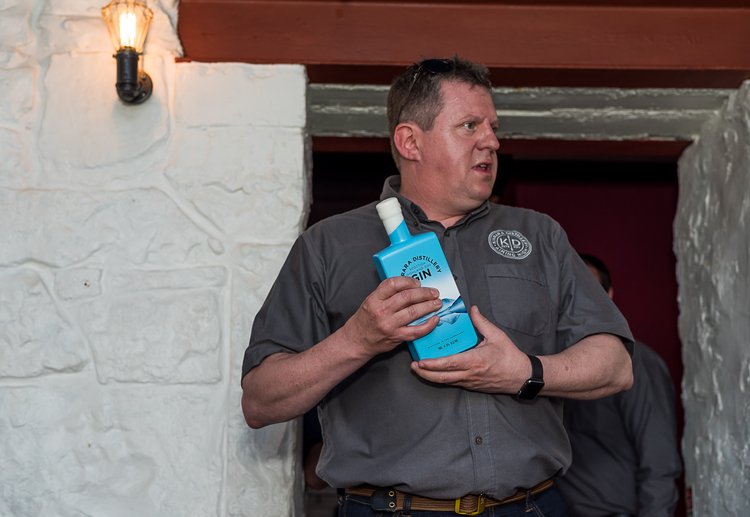 Kinrara Distillery Gin: bottles showing Ginnie the Highland Coo and the original labelling.
Kinrara Distillery Gin: bottles showing Ginnie the Highland Coo and the original labelling.
New Scottish gins are being released all the time. Has Kinrara got what it takes to stand out?
Well, if location was the deciding factor then it would certainly make the running.
Lots of new gin distilleries are located in non-descript units on industrial estates.
By contrast, Kinrara’s Highland distillery is nestled in a 12,000 acre estate in the Cairngorm National Park, just outside Aviemore.
The estate was founded in the 1750s by Lady Jane Gordon.
An IT girl long before IT girls were invented, she was known as the ‘Empress of fashion’ and achieved fame for both her parties and her skills in recruiting for the Gordon Highlanders.
Apparently, it was in the drawing room of her Edinburgh address that Rabbie Burns first read his poetry to Edinburgh society.
If Lady Gordon's drawing room was the height of luxury, then the Kinrara distillery is rather more Spartan.
Housed in a former milking parlour, essentially a converted cow shed, the micro-distillery started experimenting with different recipes last year just as the Highland winter set in.
Kinrara Gin: Highland Distillery
 Kinrara's Highland location. Rather more picturesque than an industrial estate in Broxburn.
Kinrara's Highland location. Rather more picturesque than an industrial estate in Broxburn.
Fortunately, the two man distillery team survived the worst of the freezing weather - perhaps the gin helped - and bottled their first batch of 240 bottles just as winter was coming to an end.
They describe what they have produced as a Highland dry gin that uses locally foraged rosehips and rowanberries among its botanicals.
Juniper does grow on the land surrounding the distillery but it is not consistent enough to be used in the production of the gin.
The result is a London style, juniper-forward gin with a punchy coriander note. It has floral notes in the middle and a lingering orange to finish.
The distilling is done in two 100 litre, gas-fired copper pot stills. It is all done by hand and they don't even have a spirit safe to help cut the heart of the gin.
Instead, the head distiller, David Wilson, decides on the cut points by nosing and tasting the spirit.
When running a still, whether it be for whisky or gin, distillers discard the early and the late parts of the run.
These heads and tails contain unwanted flavour compounds and aromas whereas the heart of the run has the flavour characteristics which the distillers want.
Judging when to cut the heart is a large part of the distiller's skill.
At a recent launch for Kinrara, we all tasted different spirits from before and after the heads cut and before and after the tails cut.
Even to this blogger's untutored palate, the difference between the various stages of the distillation run were pretty apparent.
They are even more apparent to David who can discern different flavours between each five litre stage of the distillation process.
Cairngorms reflected in Loch Morlich
The resulting gin is sold in bottles which have been fully sprayed and enamelled with a striking picture of the Cairngorms seen from Loch Morlich.
Later in the year, Kinrara will release a limited edition bottle featuring artwork by Cat Baxter. the bottle shows Ginnie the Highland Coo depicted using all the botanicals found in Kinrara Gin.
Kinrara is currently at phase one of development. The plan is to open a shop and tasting rooms as well as producing whisky and, less conventionally, rum.
The aim is for Kinrara to become known as 'The Home of Hand-Crafted Highland Spirits'.
The 5pm Dining blog knows better than to predict whether or not new spirit brands will prosper but Kinrara are certainly doing something different.
We wish them every success.
 Director Stuart McMillan introduces Kinrara Gin.
Director Stuart McMillan introduces Kinrara Gin.
